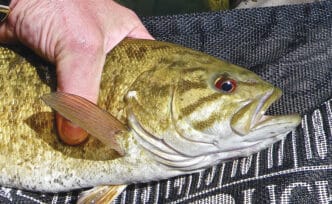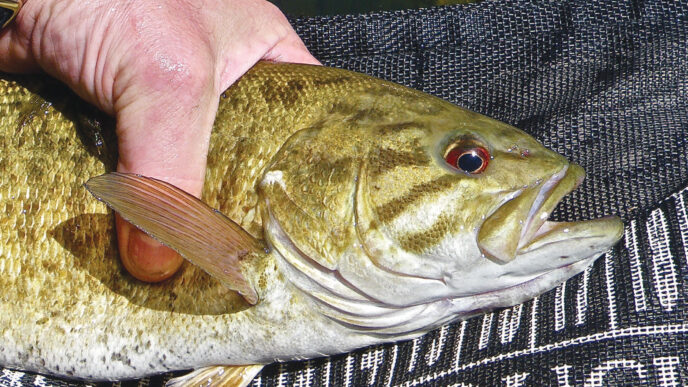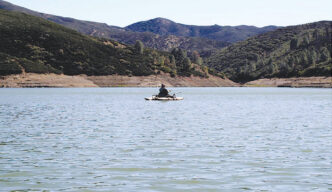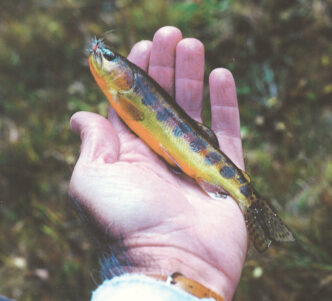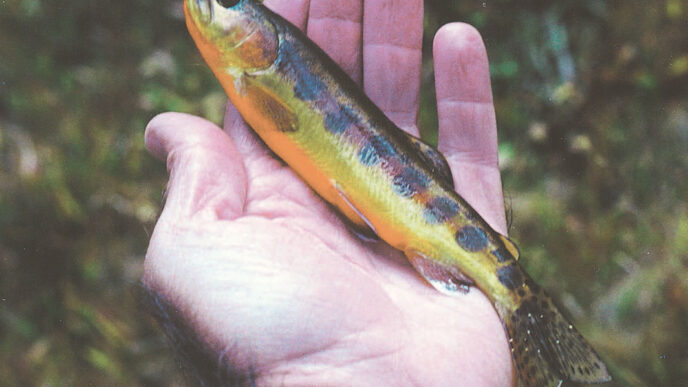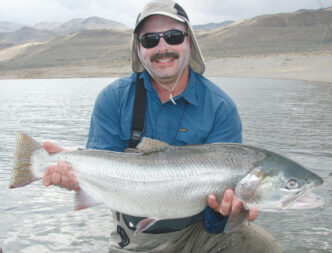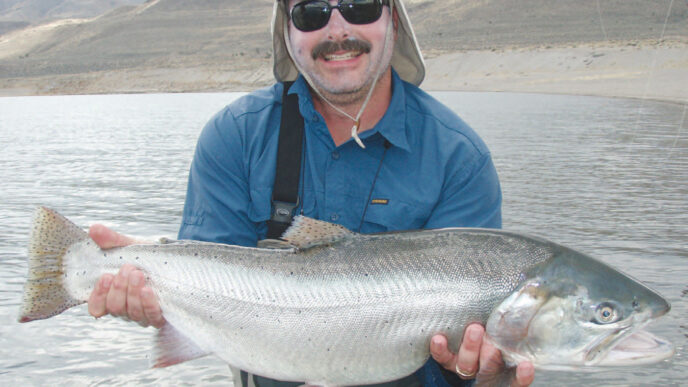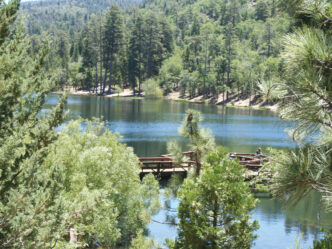In my younger years, it was all about the fish — and it still is. But getting older has helped me value more than just fried bacon off the single propane burner on the tailgate of the old truck, a soggy sandwich that got wet in the ice chest, or a drive-though fast-food burger and fries. Now it’s about the fish, the people I fish with, and dining — actually dining on real food. Sometimes it’s all about the food and the people around the table. Let’s face it, folks, occasionally the fish don’t cooperate. Creating fond memories, breaking bread with others, and rehashing the day’s events — like the one that got away — makes the fishing trip complete.
Living on the west side of the northern Sacramento Valley gives me a little extra appreciation for some of our local fare. What is great about the area is that we have a multicultural mix of cuisines: Basque, Italian, Mexican, Asian, and plain ol’ American. The west side offers a modest sampling of something for everyone.
Nancy’s Elkhorn Family Lodge is a place that time seems to have forgotten. The residents of Elk Creek love this family-owned and operated business, and it’s quite an original. The tavern portion has a huge country bar running along the west side of the building. Wood stoves are set in corners, with a pool table hidden in the back. The old, unlevel wooden floors groan and creak as you walk across them. The café expanded years ago by adding a sitting area with a dinner bar and booths. The saloon is well stocked with local favorites and stiff liquors. (Whiskey shots are common.) The wine list is short, but commonly known wines are available. The food is American country home-style cooking; fried chicken, biscuits and gravy, and everything else one is likely to find in a mom-and-pop diner. The food is good and hot — the way Mom made it — and the prices are very reasonable. Dessert is easy — stick to the homemade pies. Nancy’s is famous for pies, and a piece of marionberry pie is simply wonderful. Nancy’s Elkhorn Family Lodge is simple to find in Elk Creek. Its address is 2745 County Road 306; phone (530) 968-5312.
In my hometown of Willows is Wong’s Chinese Restaurant. Its food is appreciated by both locals and travelers from afar. Celebrity race car drivers (Hollywood and NASCAR drivers from the Thunderhill Raceway) are also known to break an egg roll or two at the little eatery. The restaurant serves both Americanized and authentic Chinese food. The dishes are prepared with fresh vegetables, meat, and house-specialty sauces. The family that owns the restaurant also works at the restaurant, serving, cooking, boxing up takeout orders — the whole nine yards. Wong’s chicken with green beans entrée is my favorite. The fresh green beans still have a soft snap to them, and with a generous helping of chicken in a light sauce, it’s simple and refreshing. The egg foo young is a generous portion of crisp vegetables with freshly cut meat or shrimp, seasoned just right and with the eggs light and downy. Save the leftovers for a quick meal on the water. Wong’s is located right off Interstate 5 next to Motel 6, at 456 North Humboldt Avenue in Williams; phone (530) 934-4344.
The Berry Patch Memphis Barbeque is a family restaurant off Interstate 5 in Orland. My family and I eat there on a regular basis. We like the home-style Southern food at a reasonable price. The service at the Berry Patch is polite, and the folks treat you as if you’re dining at home. The secret behind the great-tasting meat here is the water-smoked slow cooking of the barbecue. The ribs, beef brisket, tri-tip roasts, and slow-cooked chicken are out of this world. The smoking is enhanced by the sweet taste of different sauces. I always seem to order the beef brisket. It’s a simple dish that’s accompanied with beans and homemade coleslaw. The Berry Patch serves breakfast, lunch, and dinner. It stocks the common everyday wines and beers. The family atmosphere, superb home-style food, and great prices make the Berry Patch a place to experience. The Berry Patch is at 900 Newville Road in Orland; phone (530) 865-8484.
Uncle Chong Best Burger is a multicultural mix of food and themes. When you enter the sidewalk burger joint, the restaurant layout reminds you of a 1950s diner where high-school kids hang out. It should, because that’s what it is. The menu lists burgers, burritos, hot dogs, chili fries, and more. The burgers have a great local reputation, and they live up to it. Also, you feel the energetic vibe from the atmosphere. Munching on chips and salsa and listening to classic pop and rock while you wait for your food is pretty cool. I’m a fortysomething guy with a family, but I feel I should be meeting high-school friends and talking about the bass we’re going to catch at Black Butte Lake or reliving the shad fishing from the past evening. It’s a place that sees all types of people, from students, to farmers, to lawyers, and everyone loves it. Uncle Chong Best Burger is at 426 Walker Street in downtown Orland; phone (530) 865-2899.
If you haven’t experienced Louis Cairo’s, check it out. It sits in a historic area in Williams. The world-famous Louis bread, smothered in a thick layer of garlic, is a favorite of mine, and when you enter the eatery the first thing that hits your nose is the wonderful aroma of garlic, garlic, and more garlic. The American-Italian cuisine consists of fine steaks, seafood, and pastas. I haven’t had a bad lunch, dinner, or dessert at Louis Cairo’s. The list of wines and spirits is lengthy, with wines from around the globe available and local wines topping the list. The full bar can compose any favorite drink to your liking. What I really enjoy about this longtime local establishment is that the main focus is on family. From the partnership of the family and friends who are owners to the staff, you’re treated like family. The restaurant has a family-oriented menu, too, but I have to warn you that it’s easy to spend your last dime on their great food. Louis Cairo’s is at 558 Seventh Street in Williams. You can access their website at http://www.louiscairos.com or contact them at (530) 473-5927.
Granzella’s has a long-standing reputation in the Williams area for providing good food and lodging. A couple of years ago, the original Granzella’s burned to the ground. With a new building, the Granzella family has moved forward with the same excellent fare as before. The full deli and the dining room are nice places to sit, relax, and enjoy the American-style food, which includes burgers, steaks, and many traditional home-style dishes. The McCarty’s burger is my favorite, and is pretty much all I order when I am at Granzella’s. The selection of wines, beers, and spirits is impressive in the bar area, with its huge oak bar and Western décor. Granzella’s is located right off Interstate 5 at 451 Sixth Street in Williams. You can access their website at http://www.granzellas.com or contact them at (530) 473-5583.
Up and down Interstate 5 are great places to stop and sample the local fare. There is nothing like a hot bowl of minestrone soup on a cold winter’s day or a real home-style cheeseburger after flipping bass bugs on a roasting summer’s night. Eating at a drive-through fast-food franchise offers just the same old heartburn, but actually dining — having a relaxing dinner with friends at establishments that leave a long-lasting memory — that’s what a good fishing trip is all about.
Crayfish
By Richard Anderson
In his “Under the Alders” column this issue, Ralph Cutter notes that crayfish were introduced into Lake Tahoe back in the 1930s and that their growing population downstream in the Truckee River might have adverse consequences for fly anglers. This is certainly unpleasant news for those of us who fish these waters. But if crayfish are an invasive species that harms our prospects for angling and might have other undesirable ecological impacts, what should we do about them?
The answer, my friends, is obvious.
Eat the critters.
Crayfish can be prepared in many different ways. The first step usually involves cooking them in a crayfish “boil,” which basically means dropping the living crustaceans into boiling water that has been seasoned with a variety of spices and that might also include ears of corn, onions, potatoes, and sausages. You can find a number of recipes for crayfish boils on the Internet, and I’ll provide one below. When cooked in this manner, you use your hands to disassemble each crayfish and remove the meat from its tails and claws, as you might with lobster or crab. Aficionados also seek the roe and the cream-like “butter” found inside the shell.
A boil, in and of itself, accompanied with cold beer and wine, can serve as a simple and satisfying communal meal. And given that most other crayfish recipes (such as bisques, risottos, jambalayas, and étoufées) require removing the tail meat from 30 to 100-plus crayfish, the boil is where a lot of us stop. Why go through the hassle of peeling so many tails and disjointing a bunch of claws when your friends are perfectly willing to do it themselves?
Of course, before you can boil crayfish, you need to collect them. When I was a kid, that meant securing a piece of raw, spoiled liver to a string tied to a stick, then lowering it beside rocks and crevices along the bottom of the Russian River. A crayfish would grab the meat with a claw, and if you were fast enough, you could lift it out of the water and into a bucket.
These days, I use a trap that I bought at a local hardware store. ( You can also purchase them over the Internet.) I punch holes in a can of cat food, stick the can into the trap, and lower the trap into a rocky section of a lake or river. If I’m collecting along a river, I position the trap in a spot where the current is unlikely to carry it away and then try to secure it to the bottom with a rope and an old ski pole (basket removed) to serve as a stake, or I’ll tie it to nearby structure. Then off I go fishing. When I return, I empty the trap into a bucket partially filled with river or lake water, then transport my catch home.
Because crayfish were typically collected from muddy waters in the Deep South, directions for their preparation often call for “purging” them in salted water before cooking. I’m not sure this step is necessary when collecting crayfish from relatively clean waters such as the Truckee or Lake Tahoe, but it probably isn’t a bad idea, and I usually at least put my catch into a basin fed by a hose for a few hours or overnight before I cook them.
Back around 1990 or so, at a farmers’ market in San Francisco, I picked up a brochure titled California Crayfish that had been prepared by the University of California Extension. Here is its recipe for a “Basic California Crayfish Boil” (and it is truly basic). To serve three to six people, bring to a roiling boil the following ingredients: 4 gallons of water, 10 tablespoons of salt, 4 lemon halves, 2 to 3 bay leaves, and 2 tablespoons of black peppercorns. Next, drop in 10 to 12 pounds of live crayfish and return to a boil for 3 to 5 minutes. Remove from the heat, drain, and serve.
Note, however, that according to the U.C. brochure, there are between 10 and 16 live crayfish per pound, so this recipe will require that you harvest at least 100 crayfish if you wish to serve a small group. Get your fishing buddies involved. It’s a great excuse for a party!
If you’re interested in a dish that’s a little more complex than a boil, here’s a recipe for a “Quick Crayfish Jamalaya,” also from the U.C. brochure:
2 cups cooked and shelled tails
2 tablespoons butter or margarine
1 cup chopped green peppers
1 cup each sliced green onions and celery, including tops
1 clove garlic, minced 1 cup uncooked rice
1-1/2 cups chicken broth or water from crayfish boil
2 cups canned tomatoes
1 teaspoon each salt and poultry seasoning
Ground pepper to taste
Melt butter or margarine in skillet; add green pepper, celery, and onions. Cook until tender, but not brown. Add remaining ingredients and bring to a boil. Stir once or twice, reduce heat, cover and simmer 20 minutes or until tender. Mixture should be slightly moist. Fluff with a fork. Serves three to four.





